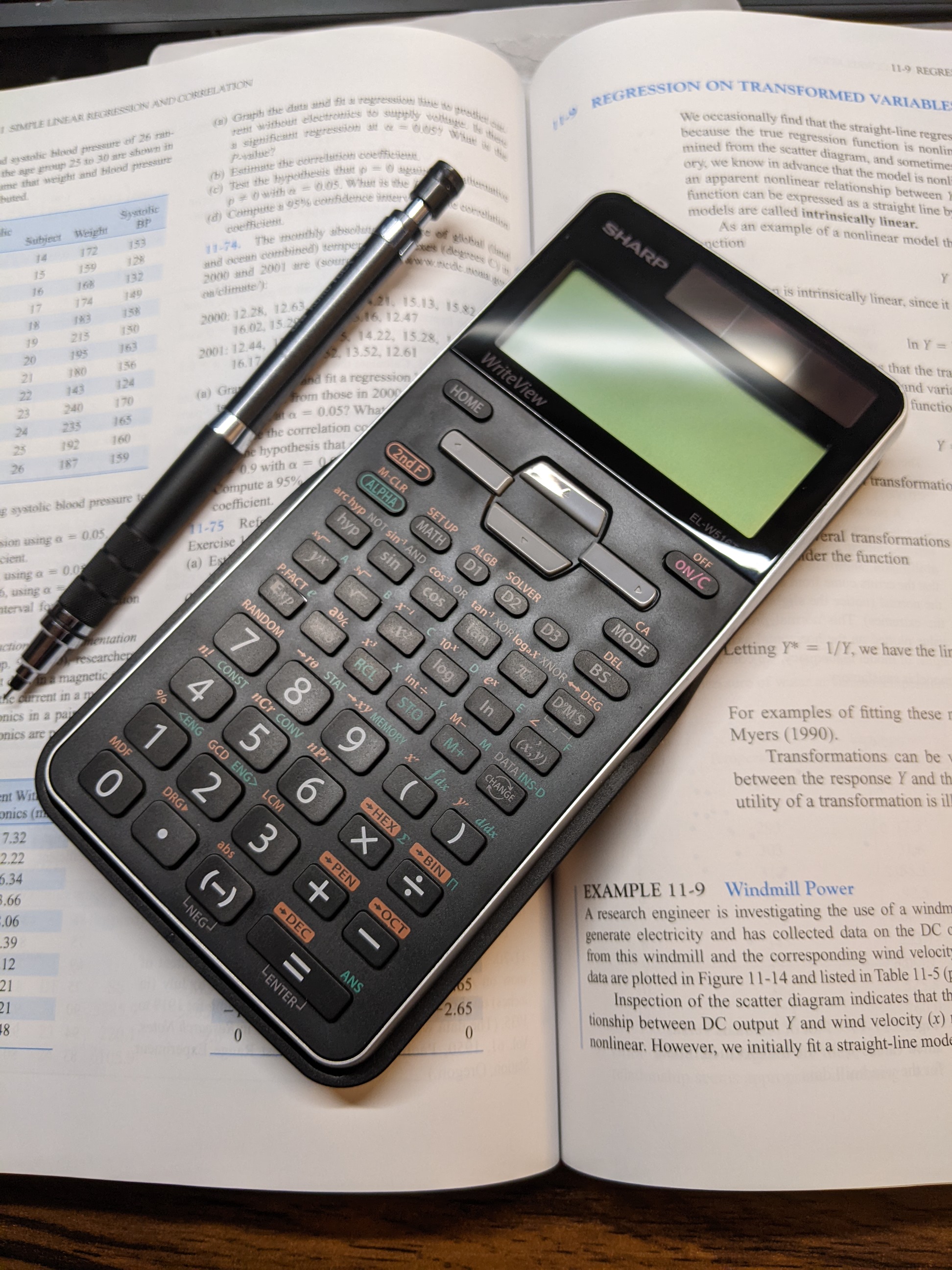I absolutely love this calculator, with one important caveat: I will never do integrations with this machine except as a test. Its integration algorithm tips over at ridiculously low speeds when it comes to edge cases. I find that it adds to the Sharp's charm, but it definitely affects its usefulness. Aside from that, this nifty little guy has a few features that you can't find on other calculators, and is arguably the best one out there for statistics and tables.
First of all, those buttons labeled D1 through D3 on the top row? Those are this calculator's super power. Programmable Buttons! Let's say that you're in Matrix Mode, and you are doing a whole bunch of stuff with matrices A and B. Typically, to use matrix A it's a three button journey: MATH -> 0 MATRIX -> 0 matA. Instead, you can hit STO D1 and it will let you assign matA to the single button press of D1. Any function from any menu can be mapped to one of those three buttons, saving tons of button presses if you get into the habit of using them.
Most scientifics don't make it too difficult to do base-n calculations, but Sharps make it the easiest out of any manufacturer that I've tried. They are also the only one that supports pental in addition to the standard hex, decimal, octal, and binary. Honestly, I've never had any reason to use pental, but if you're doing something that requires it, this is the only way to go!
It doesn't have any stats features that the Casio fx-991EX or CW don't have, but it does have persistent memory. Anything that you pop into the statistics lists or tables are retained after the calculator is shut down. This is a huge win over the Casios which clear everything when you switch modes or power them off. If you're working with stable sets of data over a longer period of time, this is a lifesaver!
For tables, the Sharp is also a clear winner. When making a table from a function, both the Casios and the TIs have a static value for where x starts. The Casios will only compute 15 steps, while the TIs will continue to calculate as you scroll down through the values. The Sharps not only do rolling calculations going forward, but backwards as well. It's a nice feature to have if you use tables quite often.
Then there's the not so rosy stuff. The aforementioned integrations being the most egregious. It handles easy integrations as well as any other, but when it comes to edge cases it falls down in a light breeze. Take int(e^-x^, 0, A), for instance. Every non-CAS calculator will crap out as A increases in value, but some are far better than others. The new Casio fx-991CW can handle A all the way up to 2.55x10^9^. Even the Catiga CS-121 can get up to 1500 before it gets inaccurate. The Sharp EL-W516T? 16. It dies at 16. Says that the integral is greater than one. It's embarrassing!
The other place that it distinctly craps out in comparison to other flagship scientific calculators is its SHIFT+SOLVE function. It will only solve algebraic equations with a 0 on one side. It won't solve integrations or derivatives like the Casio, and even the TI 36X Pro can handle equations with x on either side of the equals sign. With the Sharp, you need to perform the algebra to get one side equal to 0 or it errors out.
Overall, it's a great device that gets a lot of use on my desk. You just need to be aware of where it is is weak, and be prepared for those inaccuracies.
